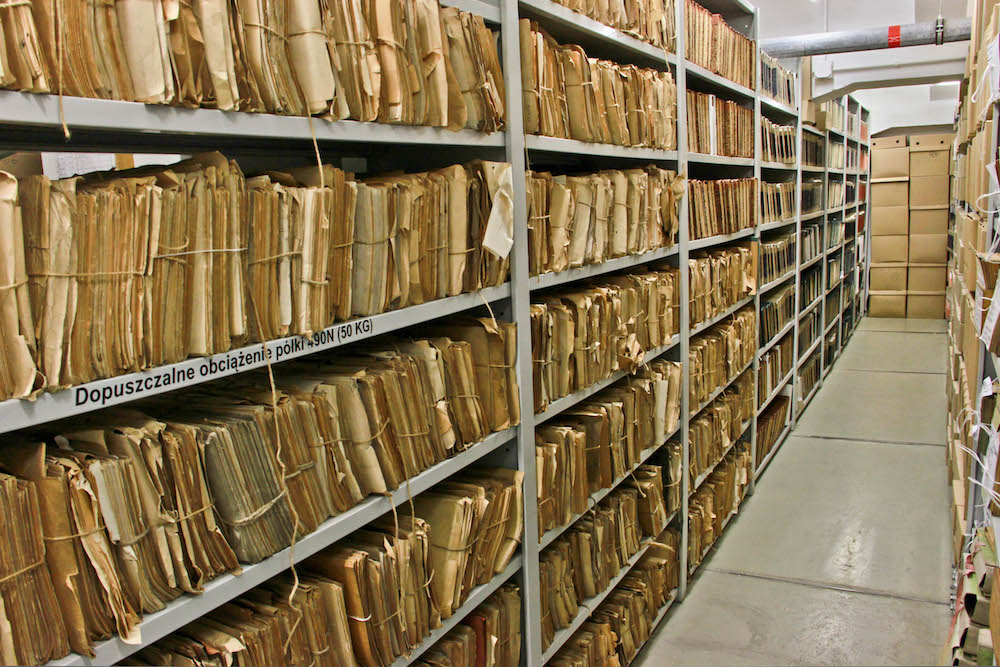The design of the archival inventory in our country in recent years is especially relevant due to constantly changing changes, reforms, restructures and changes affecting the economic sector. Information stored in archives is considered important and valuable. It allows you to understand why the situation has developed in a specific way, as well as to understand what are the prospects for the future. Archives are an invaluable source of information, but only then really useful when you can navigate it. For this, a system for organizing archives was introduced.
The relevance of the issue
The archives of our country are aimed at the accumulation of reliable information. The main function of the archival inventory is to simplify the search for the necessary information in the largest repositories of information. For this, a reference system is provided, a methodological basis that applies to all archival institutions of the state. In fact, we are talking about a scientific and reference apparatus, due to which a national level archive functions. The efficiency of this device depends on how efficiently and carefully the directories are formed, that is, the inventory.
The current realities of doing business are such that an archival inventory of cases is a key reference guide to help navigate among a sea of information. The inventory is a document that lists the stored files, at the same time it is used to record documentation. The information load is estimated as large, the inventory serves as the foundation for the compilation of pointers and guides. In many ways, how good the inventory is, determines how easily and quickly the information you need is found. They talk about two main functions of such documentation: information and accounting.
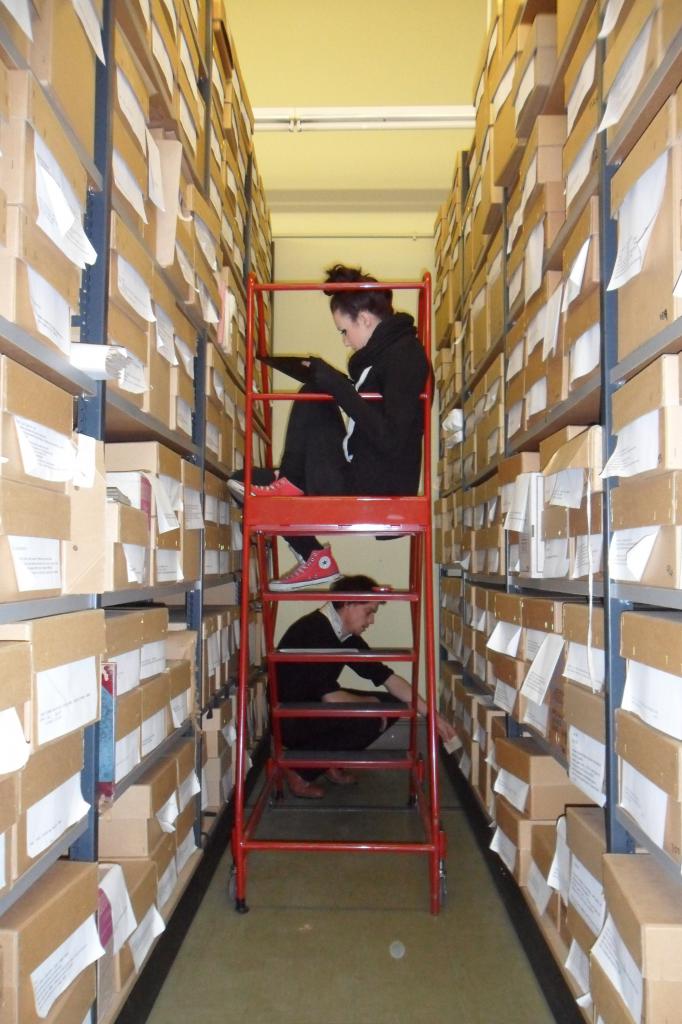
About terminology
Archival file of cases is the main directory structuring the work of an archival organization. Inventory is an accounting record, at the same time it is a scientific and reference object, providing an opportunity to quickly find what you are looking for. Inventory - the final step of paperwork with documentation that must be stored in the state archive or organized with some department. In order for the archive to be fully equipped, it is necessary to form inventories for all matters intended for storage permanently or for more than a decade. It is necessary to create directories describing which personal documentation related to the state has been evaluated by experts and recognized as valuable, therefore it must also be stored.
In modern office work, speaking of archival inventories and their purpose, they note that the documentation belongs to the category of reference. It is formed in order to describe the composition and contents of the stored units, as well as to consolidate the systematization and accounting system adopted in a particular fund. The objects that are considered in the inventory are units. Each inventory is one level. There should be enough information in it so that you can find the necessary data in the unit without spending a lot of time on it.
Which and where
According to methodological recommendations, compilation of archival inventories should be individualized for cases that are intended to be stored permanently, for more than a decade, and concerning personal information about personnel. Separately, it is necessary to compile an inventory of cases peculiar strictly to one legal entity. For example, it can be official investigative, judicial papers or scientific reports - it all depends on the nature of the institution.Typically, the inventory is formed in the same institution where the documents to be stored were compiled and transferred with them to the archive. State archival organizations have a specialized scientific apparatus. If the received description does not meet its standards, the inventory is compiled anew, taking into account local requirements.
The compilation of an archival inventory allows you to disclose the composition of the documentation, describe its contents, simplifies the accounting of the total number of stored files and helps to stabilize the internal systematization of the management of documentary circulation. Each case is described on a special card. The title must be indicated, from which it is clear what type of documents are stored inside, and the content of such a unit. A correctly completed completed inventory clearly describes the contents of the entire documentation fund.
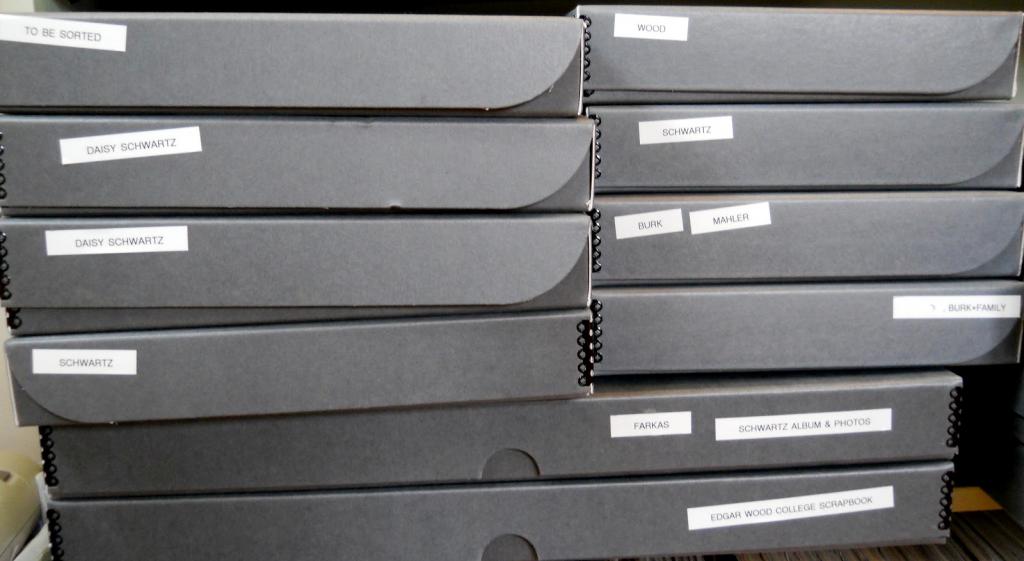
Functionality and compilation: a number of nuances
The compilation of an archival inventory allows you to determine how many units are in the fund. Through this, the safety of documentation and control over the adjustment of volume are implemented. Since cases are assigned serial numbers, you can quickly find useful information. At the same time, the inventory helps to establish and set a rational arrangement of documentation corresponding to clear logic. The classification of documentation within the framework of the archive is a grouping based on some scientific calculations. In this case, the structural features historically accepted in a particular institution, as well as the specifics of the work of the fund, are taken into account.
Classification, which is an integral element in the archival inventory, involves first working out a system for dividing all cases into groups, then directly distributing it. Having classified all the cards, you can create an inventory for them. Sometimes an inventory is made that reflects all the affairs of the foundation. This is usually needed if the enterprise no longer exists. If part of the legal entity ceases to exist, then an inventory of all cases for all the years of existence of this unit is formed.
Descriptions: what are they for
Documentation explaining what matters archival inventories are compiled exists at the federal level - this is legislation. Also, local acts governing this issue may be adopted at the enterprise. As a rule, inventories are done in a year, but they can also be drawn up for a different time period. This is how they classify the affairs that appeared in the company during this period. Inventories can carry different functions, be thematic, subject. You can leave an inventory of all the affairs of a fund, you can create a separate independent document for different parts of this fund.
In fact, an archival inventory is a list of stored files, the final result, a certification sheet, a directory. The description indicates which units are stored in the file. To do this, use numbers, indexes, headings, deadlines, the number of sheets and notes. Typically, the inventory is compiled in a table, and each listed parameter has its own column. The primary documentation for the person responsible for the formation of the inventory is the nomenclature adopted in the clerical work of the enterprise. Before you start working in archives, you should check whether the titles of the documentation match the name of the case, how correctly it is formatted, whether the documentation is correct inside. For the inventory to be considered compiled correctly, all storage units must be numbered, taking into account the internal rules of systematization. A unified system of norms is applied both to affairs and to objects within them. To correctly fill out a descriptive article, you need to transfer all the headings with the utmost precision. When introducing elements whose headings match, you need to write "Same." If the headers are different, the information is transferred completely.
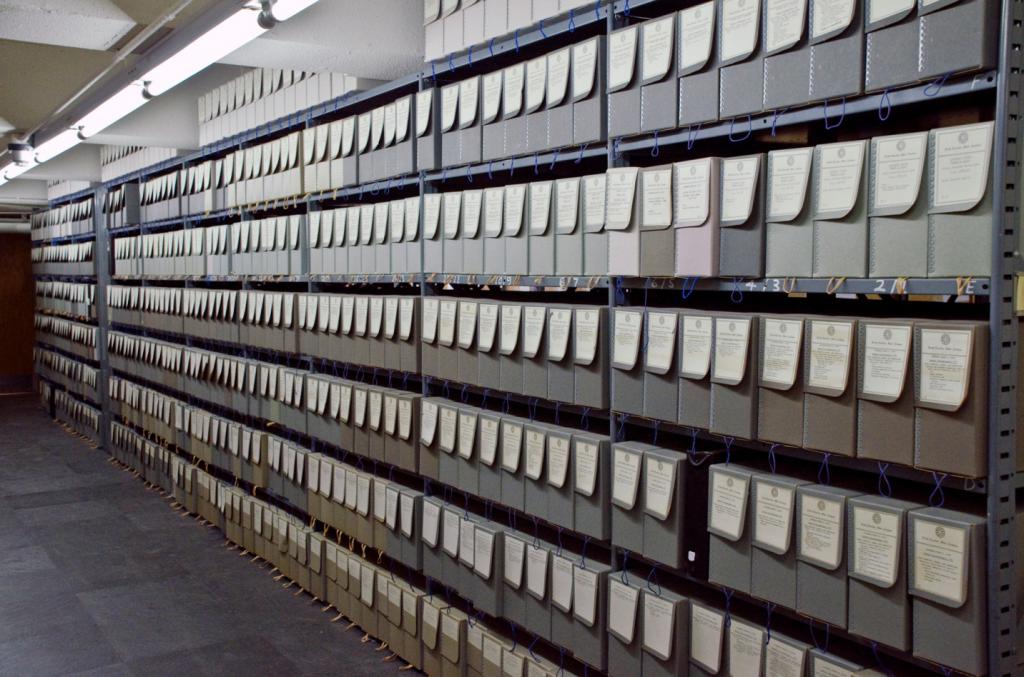
Fundamental rules
The list of archival documents may consist of several sheets.On each new one, all headings should be present in full wording, exactly corresponding to the original documentation, even if the previous sheet had the same names. In the notes it is necessary to describe the physical state of the documentation, as well as to put a mark in case the case has dropped out. If one case contains documentation for several years, it is necessary to sort it, focusing on the start date of the maintenance. When numbering, do not exceed the value "9999". Five-digit numbers are not applicable for this. If possible, everything should be systematized and described, taking into account the chronology. The second sorting rule is the internal structure of the enterprise.
When an inventory of archival documents is compiled, the final step in its formation is a unique number. To determine it, they are guided by a register of inventories. If the organization receives inventories from the structural unit and uses them in their work, in order to generate a description of the entire archive of the enterprise, it is necessary that the department transfer all documents in duplicate. The inventory for the year is made in four copies, for the affairs of personnel three identical inventories are necessary. For cases intended for storage for more than two decades, an inventory should be made in the amount of two copies. When compiling an inventory of documentation related to personnel, you must first add up all the orders, then lists, cards. Only then personal files are sorted, then bills and payroll sheets. Next in order are work books, the final part is acts drawn up in the framework of industrial accidents. To systematize personal affairs, resort to alphabetical ordering. It is necessary to make cases in the inventory, focusing on the year in which the person was fired.
Structure and content: subtleties of design
For the formation of different types of archival inventories are responsible for different structures of the enterprise. So, for a year, such a structural document should be made up of departments, and the responsibility for the formation of a consolidated inventory rests with the departmental archive. Such a document will be the basis for the work of specialists of the state archive receiving documents from the enterprise. They use a summary inventory in order to form their internal archival documentation in such a way that personal files and documents intended for permanent storage are in different compartments of the archive.
Any form of archival inventory begins with a title page. The title is followed by a table of contents, then a preface, after which the inventory begins directly. Be sure to list all abbreviations used in the document, deciphering them, put pointers and paint translation tables. A necessary element of the inventory is a bibliography. Then a glossary of terms follows, and a certification sheet closes the document. The title must fully indicate the name of the archive and the company that created the documents, the name of the fund and license plates, names of inventories and dates.

What are they writing about?
The table of contents of the archival inventory is intended to indicate which sections are inside, on which pages they start. The preface accumulates information about the enterprise that formed the documentation fund, about the fund itself. Here they write an annotation, describe what kind of documentation is stored inside. The preface is also a list of the reference apparatus.
The main text is a description. For each unit indicate the serial number, its title and authenticity. If before the company used inventory numbers, they must be recorded in the main part of the inventory. It also mentions what accounting units are, how many sheets are in a particular unit, in what language it is composed and in which version it is reproduced. In the inventory may indicate some visual features of the stored case. If it is intended to store particularly important and valuable documentation, the description may give annotations to such objects.
A list of abbreviations used in the archival inventory is necessary if any specific abbreviations used within a particular enterprise were used in the work. Through pointers reflect subject concepts. Sometimes pointers are associated with geography, names, dates. Annotated are allowed. If specialized terms were used in the work, those must be deciphered in the dictionary accompanying the inventory. The certification sheet is intended to indicate the total information about the document. It says how many sheets are numbered inside, how many units are stored, whether the composition changed during storage. The compiler of the inventory is required to sign a certification sheet. If changes are necessary, those are recorded on the certification sheet by the originator or other person responsible for the procedure.
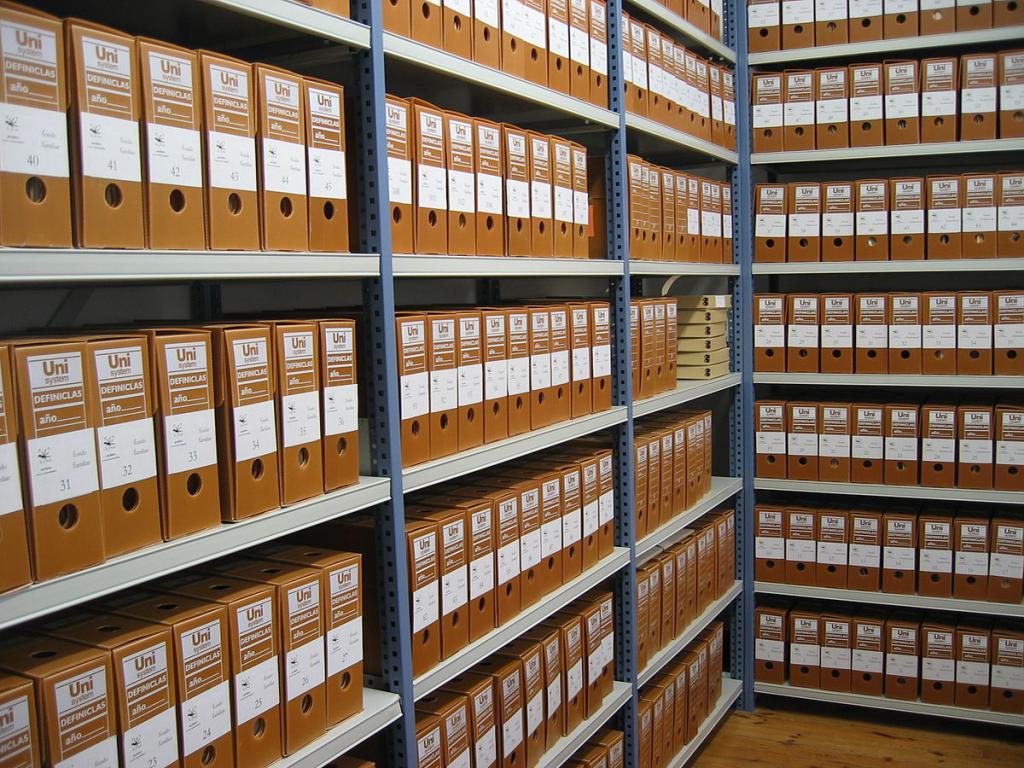
Detailed and accurate
As you can conclude from the samples of archival records of cases, the finished object should be designed in accordance with the standards of office work. It is necessary to form a help desk, thanks to which data retrieval becomes faster and more efficient. Through such a device, you can quickly get additional data on the documentation fund. The reference apparatus accompanying the inventory should contain a title page and the content of the document, a preface, a list of abbreviations and abbreviations used, as well as indexes. In some cases, there may be additional elements - tables, dictionaries.
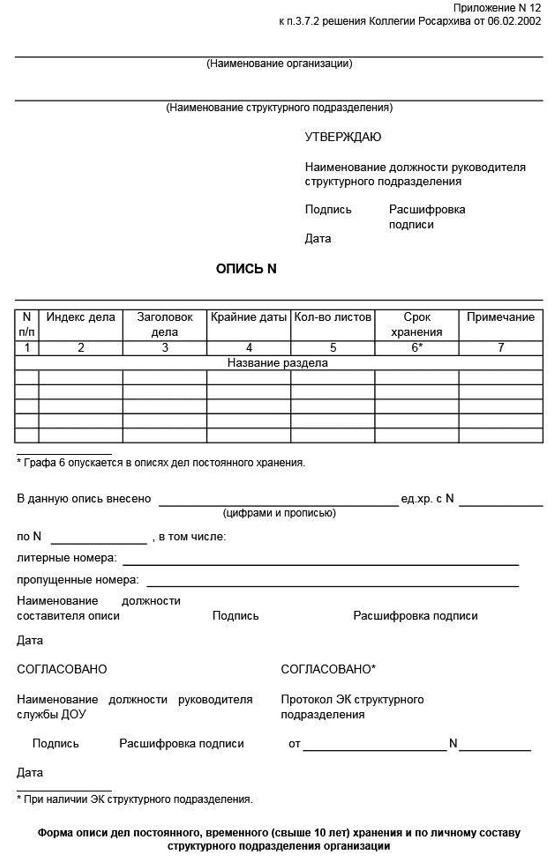
The title must indicate the name of the archive in which the documentation is stored, what is the name of the fund, including the abbreviation, as well as its number. Indicate the number of inventory and its name. The table of contents should include a complete list of all sections and the reference apparatus, including the preface, the list of abbreviations used and the names of the parts. Each title is accompanied by a page number assigned to it when compiling an inventory. It is justifiably considered that for the inquiry staff one of the most significant parts is the foreword, which describes the history of the institution that formed the fund. They write the historical environment, the conditions in which the company was active, the date of its appearance and the hierarchical structure of subordination. The preface indicates how the paperwork was organized, how large the institution was and what functions it performed, why it was reorganized or liquidated, and when it happened.
About abbreviations
Such a list is compiled taking into account the alphabet. It should contain all abbreviations used in the compilation of the inventory. The document must contain the full name of each word that has been reduced at least once. Usually abbreviations are used to save space, only frequently used words change. In addition, the help desk decrypts all abbreviations. The correct compilation of this element helps to make a uniform inventory, each item of which is as informative as possible and clearly conveys the information necessary for the reader.
There are some abbreviations that are generally accepted and actively used in written speech - symbols that encode length and mass, other units of measurement, as well as abbreviations "t. d. "," t. e. ”and similar. They do not need to be painted. It is not necessary to give a decoding to those abbreviations that are actually used words. For example, the "trade union committee" refers precisely to this category of abbreviations, which are widely used in colloquial speech.

How it all began
From the history of mankind it is known that archival inventory is perhaps the most ancient type of reference manual introduced for archives. The use of inventories in the thirteenth century was officially confirmed. In those days they were used to take into account important documents and ensure safety. Thanks to the inventories, it became easier to search for documents, so it was possible to resort to them as sources of valuable information.In the period of 13-15 centuries, the inventories were short, compiled without special systematization, only briefly described books, manuscripts. In fact, these were informal lists.
In the sixteenth century, the inventory approach became more responsible. Lists included a listing of the various documentation options. There were inventories in which the objects were grouped according to some attribute, although at the same time they were still used, in which the information was recorded without systematics. In the seventeenth century, the progress of the formation of inventories went further, detailed handbooks began to be created, differing in format. They were very useful, and even modern researchers, using such inventories, get from them some important information about previously conducted cases, then drafted documents. In the seventeenth century, inventories finally consolidate a systematic descriptive character.
